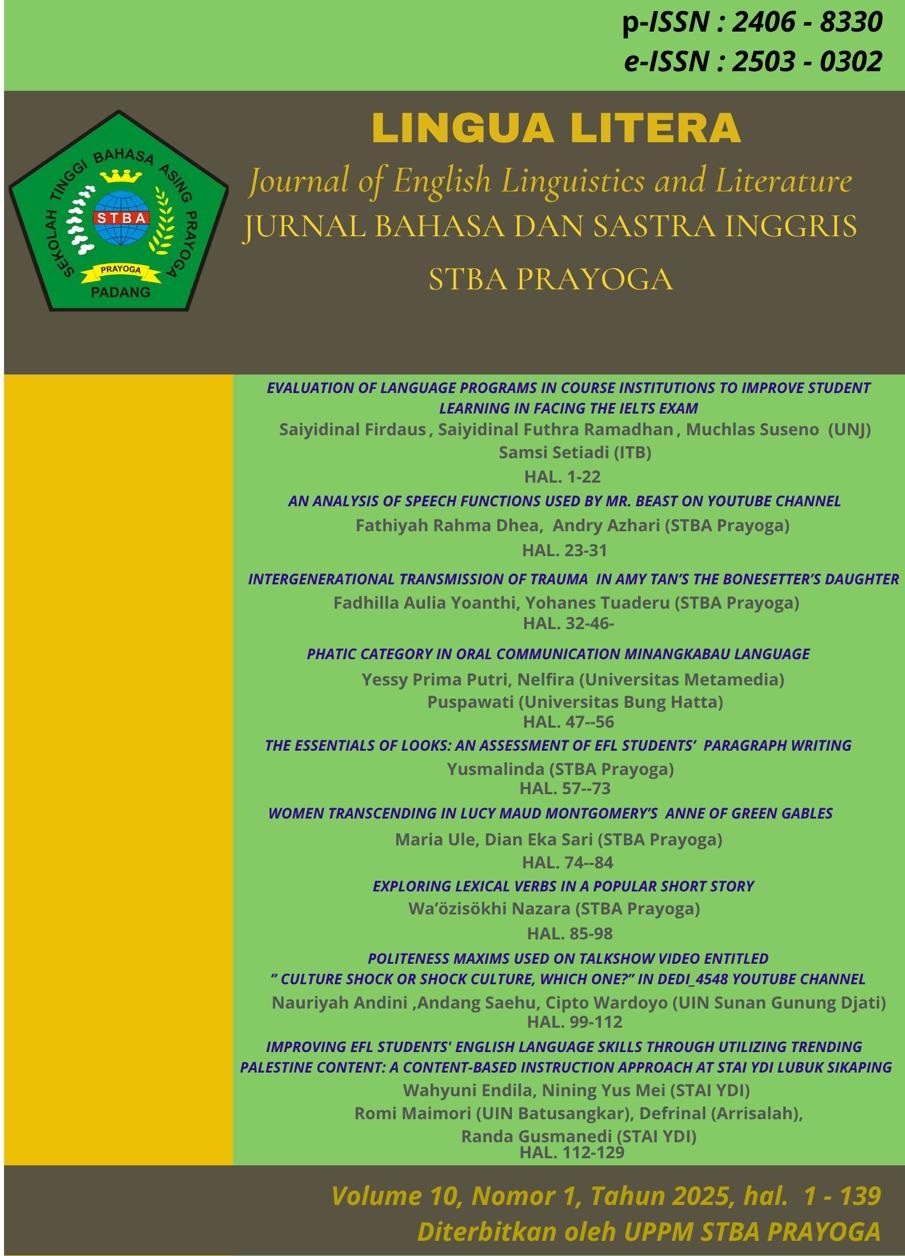Intergenerational Transmission of Trauma In Amy Tan’s The Bonesetter’s Daughter
Abstract
AbstractThis research aims to explain how trauma transmission from the previous generation to the next generation occurs, and how the next generation cuts the intergenerational trauma off in Amy Tan’s The Bonesetter’s Daughter. Using a qualitative descriptive method and utilizing the postmemory theory by Marianne Hirsch, this research was finally finished. The three concepts of Hirsch, i.e., memory transmission, reconstruction, and identification, are the main tools in uncovering the questions of how the old generation’s memory is transmitted to the post-generation, and how the post-generation cuts off the intergenerational trauma. At the end of the research, the writers found: 1) There is a structure of familial memory transmission from the mother to the daughter and then to the granddaughter, known as affiliative transmission from the objects related to past trauma. 2) To break the chain of intergenerational trauma, the parties related to the trauma should make a serious effort to experience what-so-called post-generation reconciliation. The consciousness possessed by the post-generation draws itself to overcome the trauma passed down from the previous generation.
Keywords: intergenerational trauma, transmission, post-generation, postmemory.








